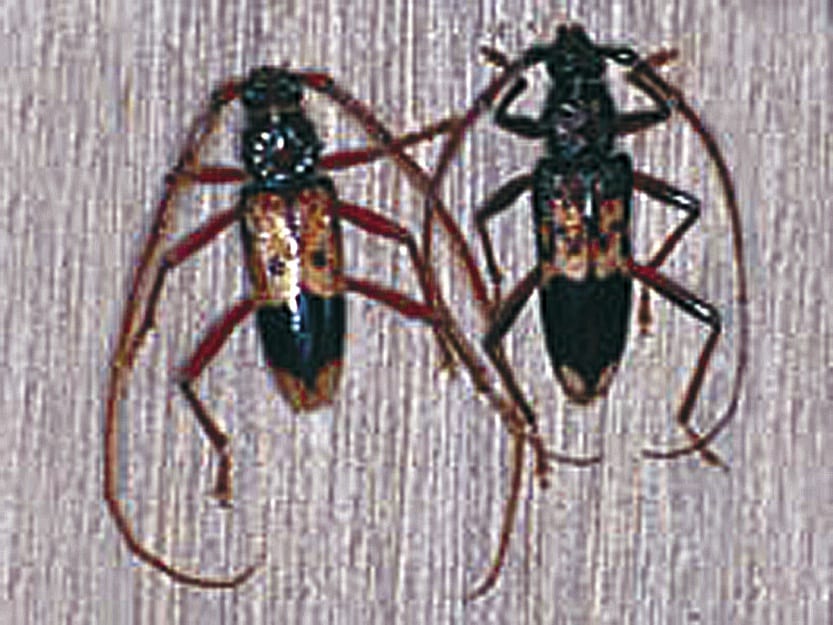Phoracantha semipunctata, P. recurva
Adult eucalyptus longhorned borers have shiny, dark brown and yellow to cream-colored areas on their wing covers. The antennae are as long or longer than the body, and the antennae of males have prominent spines. Mature larvae may be large (more than 1 inch long) and are cream colored and legless. Females lay eggs under loose bark or in crevices on bark surfaces. If conditions are ideal, larvae will bore directly into the inner bark after hatching. If conditions are less than ideal, the small larvae feed outward from the egg mass, leaving a distinct dark trail (1/4 inch to several inches long), that scores the bark surface, before they bore into the cambial tissue on its inner surface. Once the larvae have bored into the inner bark, the galleries they form beneath the wood surface can extend several feet. In trees with heavy infestations, the scraping sounds made by the developing larvae chewing into the cambium are clearly audible from a distance of several feet.
Eucalyptus. globulus, E. grandis, E. diversicolor, E. viminalis, E. nitens, E. saligna, E. sideroxylon, camaldulensis, E. robusta, E. citriodora, E. dalyrmpleana, E. cladocalyx are amoungst their host trees.
Since its 1984 discovery in southern California, the eucalyptus longhorned borer has steadily expanded wherever eucalyptus grow.
Longhorned borers mostly attack stressed or damaged plants; vigorous, well-watered trees are rarely attacked. However, in California many eucalyptus trees are seasonally water-stressed during hot summer months, rendering a significant proportion of them susceptible to the beetle.
Copious bleeding from egg laying sites often indicates initial borer attack.
Symptoms include wilting of foliage and the dieback of treetops, branches, or entire trees. Mining of bark and cambium, sometimes girdling stems or roots of young trees; tunnels through sapwood and into heartwood, filled with frass.
The female beetles begin laying eggs in groups of 3 to 30 under loose bark. They may lay up to 300 eggs, which hatch in about 1 to 2 weeks depending on temperature. First-instar larvae may bore directly into the inner bark or in the outer bark layers, before turning inward to mine at the bark-cambium-xylem. Larvae require about 70 days to develop in fresh wood or logs during hot summer months, and up to 180 days in drier logs. Following pupation, adult beetles emerge from the same holes. During spring and summer, the beetle requires 3 to 4 months to complete its life cycle. Starting in fall and winter, it may require up to 9 months.


